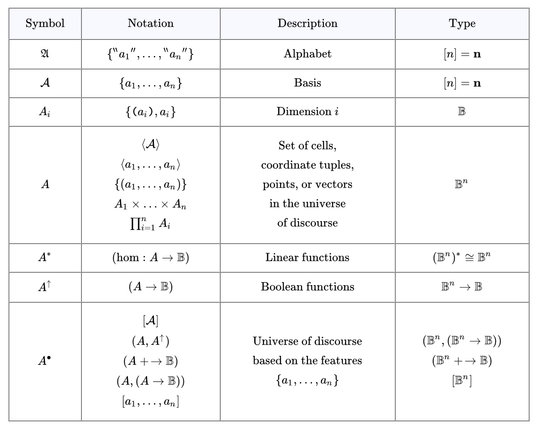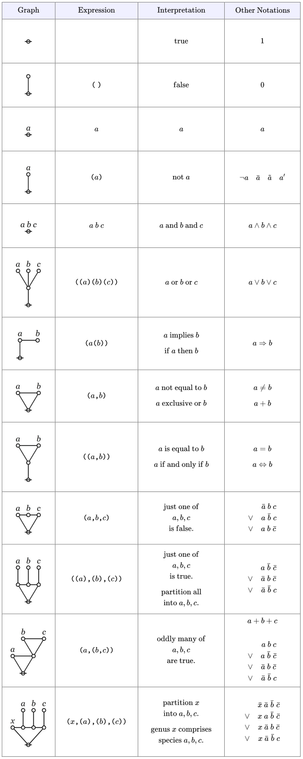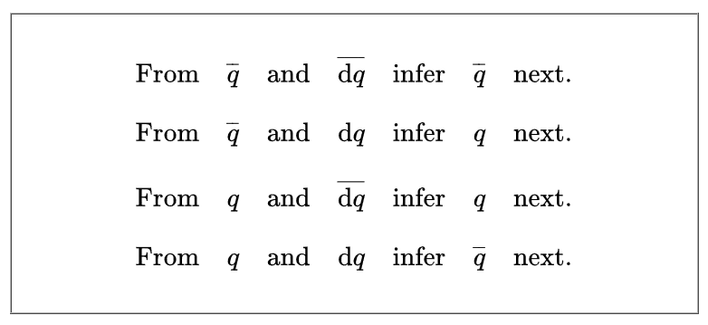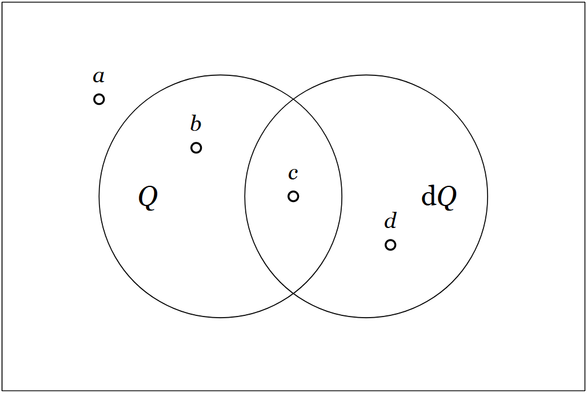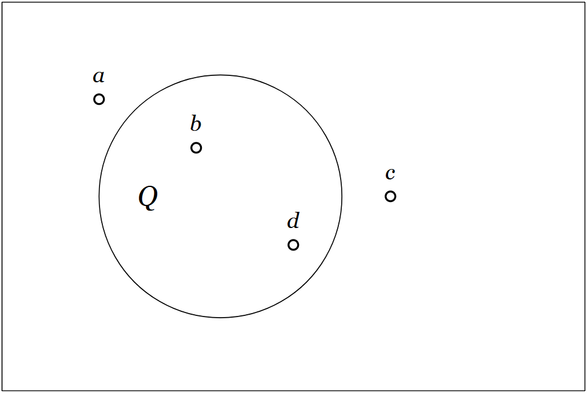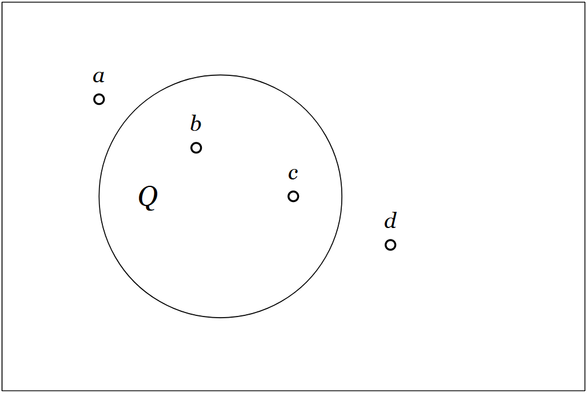Differential Propositional Calculus • 10
Special Classes of Propositions (cont.)
Let’s pause at this point and get a better sense of how our special classes of propositions are structured and how they relate to propositions in general. We can do this by recruiting our visual imaginations and drawing up a sufficient budget of venn diagrams for each family of propositions. The case for 3 variables is exemplary enough for a start.
Linear Propositions
The linear propositions, may be written as sums:
One thing to keep in mind about these sums is that the values in are added “modulo 2”, that is, in such a way that
In a universe of discourse based on three boolean variables, the linear propositions take the shapes shown in Figure 8.
At the top is the venn diagram for the linear proposition of rank 3, which may be expressed by any one of the following three forms.
Next are the venn diagrams for the three linear propositions of rank 2, which may be expressed by the following three forms, respectively.
Next are the three linear propositions of rank 1, which are none other than the three basic propositions,
At the bottom is the linear proposition of rank 0, the everywhere false proposition or the constant function, which may be expressed by the form or by a simple
Resources
cc: Academia.edu • Cybernetics • Structural Modeling • Systems Science
cc: Conceptual Graphs • Laws of Form • Mathstodon • Research Gate
#Amphecks #Animata #BooleanAlgebra #BooleanFunctions #CSPeirce #CactusGraphs #CategoryTheory #Change #Cybernetics #DifferentialAnalyticTuringAutomata #DifferentialCalculus #DifferentialLogic #DiscreteDynamics #EquationalInference #FunctionalLogic #GraphTheory #Hologrammautomaton #IndicatorFunctions #InquiryDrivenSystems #Leibniz #Logic #LogicalGraphs #Mathematics #MinimalNegationOperators #PropositionalCalculus #Time #Topology #Visualization
